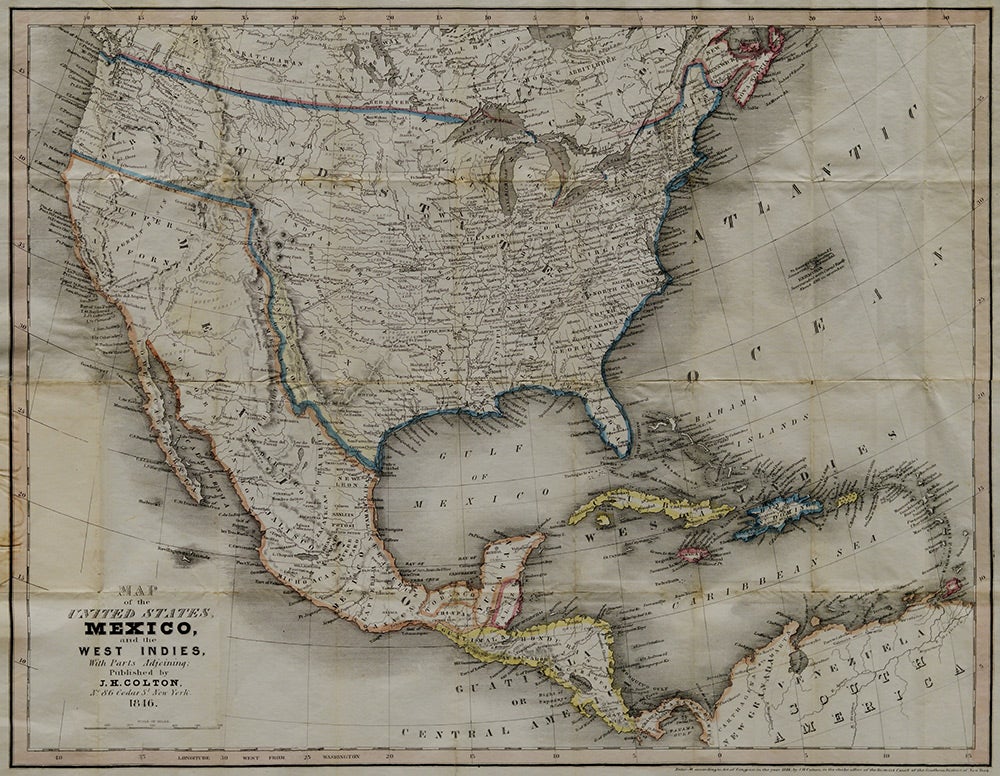Celebrate Hispanic Heritage Month with Resources from the Gilder Lehrman Institute
Posted by Gilder Lehrman Staff on Thursday, 09/21/2023

National Hispanic Heritage Month (September 15–October 15) celebrates the contributions made by Hispanic and Latino Americans to the history and culture of the United States.
The Gilder Lehrman Institute offers the following resources for classroom study and enrichment:
SPOTLIGHTS ON PRIMARY SOURCES
Spain authorizes Coronado’s conquest in the Southwest, 1540

A letter written on behalf of the king of Spain by Francisco García de Loaysa, the president of the Council of the Indies, acknowledging Francisco Coronado’s report of the famous Niza expedition of the previous year and authorizing Coronado to explore the northern lands
A report from Spanish California, 1776
A letter from Fernando de Rivera y Moncada, military commander of Alta California, about the defense of the Catholic missions in California
The Monroe Doctrine, 1823
The Monroe Doctrine, declaring American territories free from European influence, as a means for enforcing US power throughout the hemisphere
HISTORY NOW: THE JOURNAL
The Hispanic Legacy in American History
This issue of History Now includes eight essays that provide readers with a broad sampling of the rich and varied stories of centuries of Hispanic participation in the building and sustaining of our country. We have gathered experts in Mexican, Cuban, and Puerto Rican political and cultural history to share with you their knowledge of a legacy too often overlooked.
BOOK BREAKS
Alice Baumgartner: South to Freedom: Runaway Slaves to Mexico and the Road to the Civil War
Ada Ferrer: Cuba: An American History
Natalia Molina: A Place at the Nayarit: How a Mexican Restaurant Nourished a Community
HAMILTON CAST READ ALONGS
Dancing Hands: How Teresa Carreno Played the Piano for President Lincoln read by Marc de la Cruz (James Reynolds/Doctor and a Principal Standby in Hamilton on Broadway.) Written by Margarita Engle and illustrated by Rafael López.
Separate Is Never Equal: Sylvia Mendez and Her Family's Fight for Desegregation read by Cherry Torres (Ensemble member in the North American tour of Hamilton). Written and illustrated by Duncan Tonatiuh.
Soldier for Equality: Jose de la Luz Saenz and the Great War read by Javier Muñoz (Alexander Hamilton in the Broadway production of Hamilton). Written and illustrated by Duncan Tonatiuh.
The Storyteller's Candle / La velita de los cuentos read by Nick Negron (King George in the North American Tour of Hamilton). Written by Lucía González and illustrated by Lulu Delacre
CLASSROOM READY PD
American Indian and Latino/a American History
This module features a lecture on key points in Latina/Latino history by Professor Lilia Fernandez (Rutgers University) and a lecture on the impact of the McGirt v. Oklahoma decision on American Indian tribal sovereignty, the origins and evolution of the American Indian gaming industry, and the history of desecration and protection of sacred sites by Professor Donald L. Fixico (Arizona State University). It also includes expert advice for teaching these topics led by Gilder Lehrman Institute Master Teachers.
EDUCATIONAL APP FROM THE QUEEN SOFIA SPANISH INSTITUTE
Quizstory: Spanish Friendship is an educational mobile application whose main objective is to tell the little-known history of Hispanic contributions to the American Revolutionary War. Through different levels, missions, and quizzes, players will tour the cities central to Spain’s support, answering questions about each hidden historical episode, and, finally, unveiling the fundamental role that Spain and thousands of Hispanic soldiers played in the independence and establishment of the United States of America.
Quizstory is compatible with any device that supports the installation of Apple and Android applications, such as the iPad, iPhone, tablets, and Chromebooks, specifically those released after 2019. Click here for a detailed list of compatible devices.